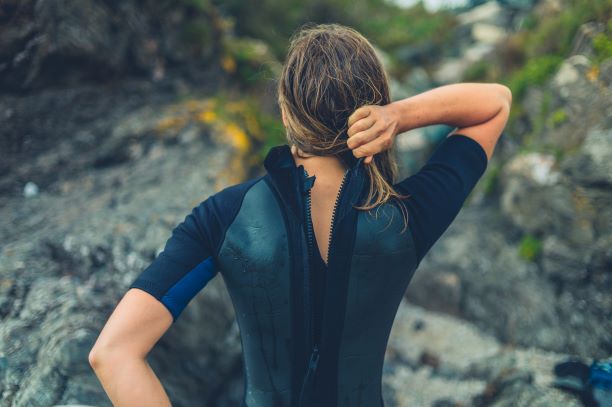A wetsuit always does a magnificent job protecting you from hypothermia, reduce drag while swimming, and allow you to stay longer underwater. However,
A wetsuit always does a magnificent job protecting you from hypothermia, reduce drag while swimming, and allow you to stay longer underwater. However, there are different types of wetsuit seam and seal you should always watch out for
Flatlock wetsuit seam seal
Ideally, flatlock wetsuits are used in wáter that is above 62-degree Fahrenheit. The flat lies against your body, making you feel more comfortable while swimming and moving. Note the flatlock wetsuits allows a little water in.
Sealed wetsuit stitching (blind stitched and glued)
Manufacturers recommend using sealed wetsuit stitching underwater above 55 degrees Fahrenheit. The sealed wetsuit is glued and blind stitched professionally. However, the blind hem does not go away all through the neoprene. The stitching comes out the same as it went inside, thus making it watertight. The seam stitching style allows in very little water.
Sealed and tapped wetsuit seams
Ideally, it is recommended for use underwater below 55-degree Fahrenheit. The stitching is glued and then blind stitched. However, it also contains interior stitching. The internal sea is added for durability, reinforces the seam, and prevents any water from passing through.
Wetsuit zipper (front/chest zip or back zip)
Unfortunately, for this category, there is more to your suit more than you may think. Typically there are three types of wetsuits with entry construction
- Back zips
- Chest zip
- zippers
back zip wetsuits
Back zip wetsuit is known as the definitive solution. It contains a zipper going down the length of your spine, and along with a cord, you can always attach yourself in and out. The remarkable thing about back zip is relative to any other style. It is usually comfortable to wear, and remove the back zipper.
The disadvantage of a back zipper’s is that water can go through the back zip and the seam. Coldwater is always a potential underlying health hazard to divers and swimmers. When bending over, the wetsuit can get toned on the back zipper, thus restricting your movement.
Chest zip wet suits
They usually enter through a zippered cut-out all around the neck and drop down into the suit through your necking. And a cutover to your head and zipped closed at the chest. The chest zipper is good at keeping water out of the wearer body.
It is also comfortable once it fits you and protects against rashes on the neck. It also gives it wearer an outstanding level of flexibility.
Zipperless wetsuit
A zipperless wetsuit is usually lightweight, and often they are 1.5mm thinner and seen in neoprene tops. The good news is they produce great flexibility over warmth by eliminating the lack of flex that is usually zippered and stitching areas.
A zipperless wetsuit is a perfect solution if you have issues with mobility when paddling or surfing. A zipperless wetsuit is often worn around the chest or the neck area by most people.
Chose to buy wetsuits online and enjoy a wide variety of high quality and different types of wetsuits to choose from and pick the one that suits your need. Don’t just sit and stare there. Order yours today and get it delivered at your doorstep!



















































































































COMMENTS